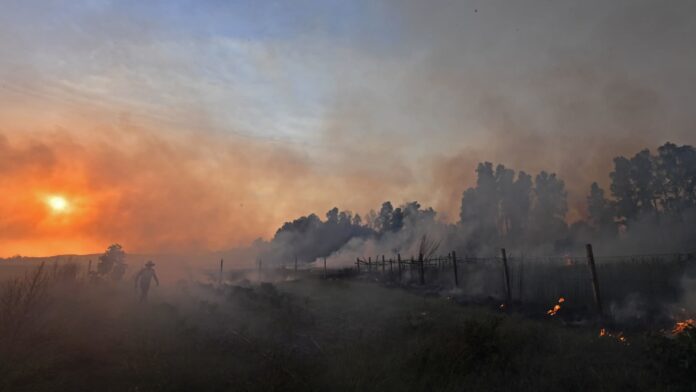Death Valley National Park on July 15, 2023, near Furnace Creek, California.
David Mcnew | Getty Images
Global air and ocean temperatures soared to a record high in July, according to the EU’s climate change service Copernicus, deepening concern among climate scientists at a time when a spate of heat records suggest the planet has entered uncharted territory.
The EU’s Copernicus Climate Change Service (C3S) said Tuesday that the global average surface air temperature in July was confirmed to be the highest on record for any month.
July was found to be a whopping 1.5 degrees Celsius warmer than the average for the 1850-1900 period and 0.33 degrees Celsius warmer than the previous warmest month of July 2019.
Meanwhile, global average sea surface temperatures continued to rise in July, the EU’s climate monitor said, after a long period of unusually high temperatures stretching back to April. For the month as a whole, the planet’s average sea surface temperature was 0.51 degrees Celsius above the 1991 to 2020 average.
The data, which is collated from the measurement of satellites, ships, aircraft and weather stations around the world, follows a flurry of record-breaking heat waves across multiple regions.
Vast parts of Europe, North Africa, the Middle East and Asia have suffered from scorching heat in recent weeks, while South American countries have been gripped by record-breaking temperatures in the middle of winter.
“These records have dire consequences for both people and the planet exposed to ever more frequent and intense extreme events,” Samantha Burgess, deputy director of C3S, said in a statement.
“Even if this is only temporary, it shows the urgency for ambitious efforts to reduce global greenhouse gas emissions, which are the main driver behind these records,” she added.
C3S and the U.N.’s World Meteorological Organization recently recognized the first three weeks of July as hottest three-week period on record.
The record heat affecting communities across the globe is fueled by the climate emergency. Scientists say the extreme weather events underscore the urgency of cutting greenhouse gas emissions as quickly and deeply as possible.
‘Just the beginning’
C3S said 2023 was the third-hottest on record in the year to date at 0.43 degrees Celsius above the recent average.
The gap between this year and 2016 — the hottest year on record — is expected to narrow in the coming months. That’s because the latter months of 2016 were relatively cool, C3S said, while the remainder of 2023 is poised to be comparatively warm as the current El Niño event develops.
Wildfires raging across Algeria during a blistering heat wave killed more than 30 people and forced mass evacuations, the government said.
Fethi Belaid | Afp | Getty Images
El Niño is a naturally occurring climate pattern that contributes to higher temperatures across the globe. The U.N. weather agency declared the onset of El Niño on July 4, warning its return could pave the way for extreme weather conditions.
Speaking at the U.N. headquarters in New York City late last month, Secretary-General António Guterres warned that “the era of global boiling” has arrived.
“For scientists, it is unequivocal — humans are to blame,” Guterres said on July 27. “All this is entirely consistent with predictions and repeated warnings. The only surprise is the speed of the change. Climate change is here. It is terrifying, and it is just the beginning.”


